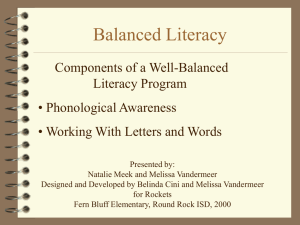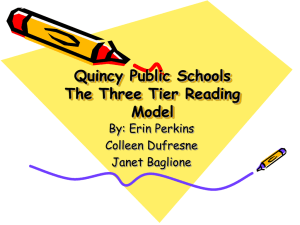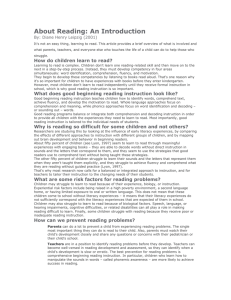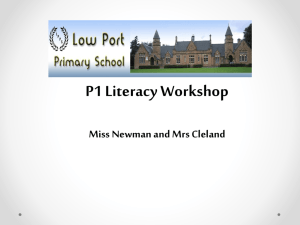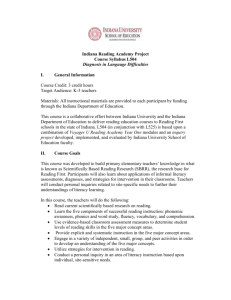Educational Vocabulary Guide for Parents
advertisement
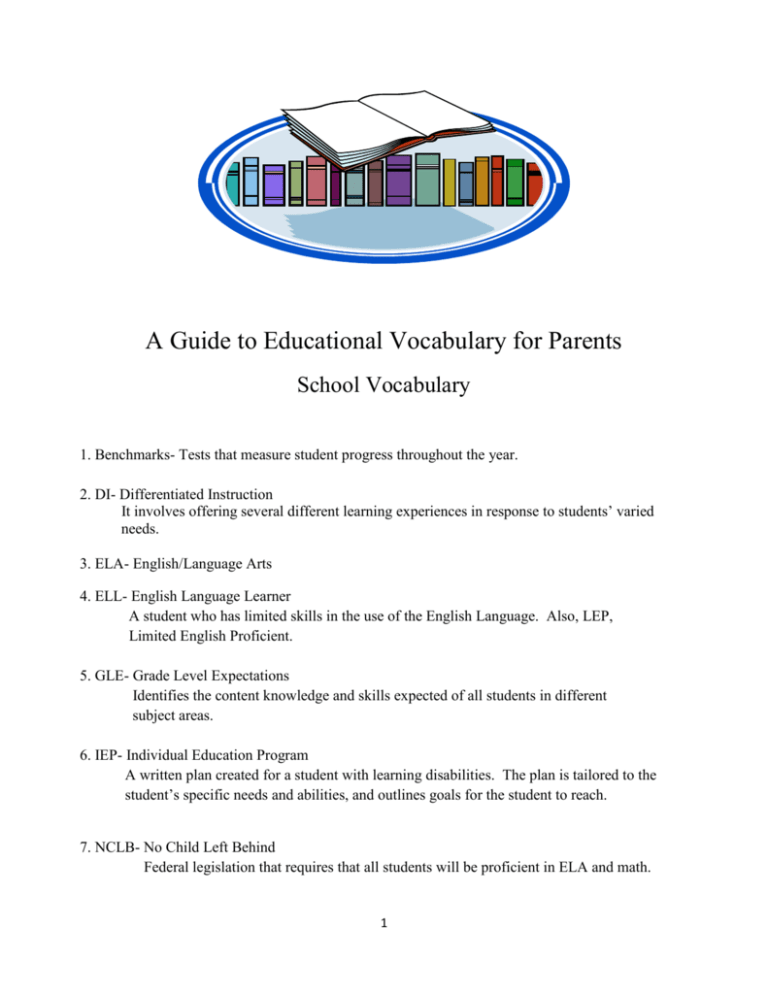
A Guide to Educational Vocabulary for Parents School Vocabulary 1. Benchmarks- Tests that measure student progress throughout the year. 2. DI- Differentiated Instruction It involves offering several different learning experiences in response to students’ varied needs. 3. ELA- English/Language Arts 4. ELL- English Language Learner A student who has limited skills in the use of the English Language. Also, LEP, Limited English Proficient. 5. GLE- Grade Level Expectations Identifies the content knowledge and skills expected of all students in different subject areas. 6. IEP- Individual Education Program A written plan created for a student with learning disabilities. The plan is tailored to the student’s specific needs and abilities, and outlines goals for the student to reach. 7. NCLB- No Child Left Behind Federal legislation that requires that all students will be proficient in ELA and math. 1 8. NECAP- New England Common Assessment The state wide standardized test in reading, writing, math, and science. 9. PBIS- Positive Behavioral Interventions and Support A program many schools use to improve student behavior. 10. RTI- Response to Intervention It is a multi-tiered approach to help struggling learners. Struggling learners are provided with interventions to accelerate their rate of learning. 11. Rubric- A written description of criteria expected in order to meet certain levels of performance. 12. SALT- School Accountability for Learning and Teaching RI’s system for accountability is a data collection system that provides a specific picture of how well students are learning, how the teaching in the school affects learning, and how the school and the district support learning and teaching. 13. SIT- School Improvement Team A group consisting of teachers, administrators, parents, paraprofessionals, and community members that meets to examine teaching and learning in the schools. 14. Title 1- Federally funded educational program that assists schools with a high concentration of economically disadvantaged students to meet school educational goals. Literacy Vocabulary 1. DRA- Developmental Reading Assessment Measures accuracy, fluency and comprehension for students. 2. Fundations- Language Basics for K-3 using phonological/phonemic awareness, phonics and a spelling program to meet individual student needs. 3. Guided Reading- A strategy that helps students become good readers. The teacher provides support for small groups of readers as they learn to use various reading strategies. 2 4. HSLP- Home Summer Literacy Program Unique to B.F. Norton – Parents participate in training on “How to Read Aloud” and “How to Listen to Independent Reading”. Using these skills during the summer months, parents support the reading process of their child to insure continued growth. 5. Literature Circles- A student centered reading activity for a group of 4 to 6 students. Each member of a circle is assigned a role which helps guide the group in a discussion of the title they are all reading. 6. Literacy- Includes all the activities involved in speaking, listening, reading, writing, and appreciating both spoken and written language. 7. Literacy Wings- An early literacy intervention program for teachers to help close the achievement gap for struggling readers. 8. Phonemes- The smallest parts of spoken language that combine to form words. For example, the word hit is made up of three phonemes (/h/ /i/ /t/) and differs by one phoneme from the words pit, hip and hot. 9. Phonemic Awareness- The ability to notice and work with the individual sounds in spoken language. 10. Phonological Awareness- The understanding that spoken language is made up of individual and separate sounds. In addition to phonemes, phonological awareness activities can involve work with rhymes, words, sentences, and syllables. 11. PLP- Personal Literacy Plan An individual plan with specific reading strategies for students who are reading below grade level. 12. PM Benchmarks- Comprehensive Reading Assessment tool for identification of pupils’ reading levels. 13. RIF- Reading is Fundamental Prepares and motivates children to read by delivering free books and literacy resources to students. 14. Running Record- A quick reading test that results in a student’s reading level and fluency rate. 3 15. Self Selected Reading- Builds fluency in reading, builds confidence by allowing students to read text most appropriate to their reading level and allows students to read books they are interested in. 16. Sight Words- Most frequently used words in the English language. These words number about 200 and comprise 50 to 70 percent of all words in written text. 17. Vocabulary- The words we must know in order to communicate effectively. Oral vocabulary refers to words that we use in speaking or recognize in listening. Reading vocabulary refers to words we recognize or use in print. 18. Word Wall Words- High frequency/sight words. Each week 5 new words are added. Students work with these words weekly as a tool to use in their reading and writing. 4
